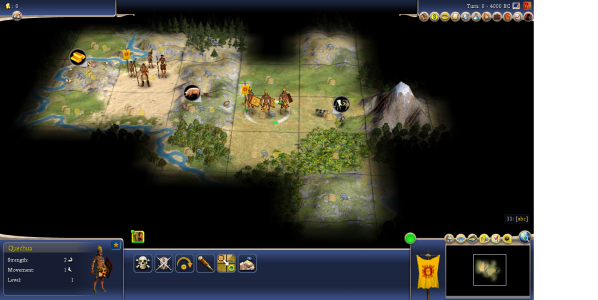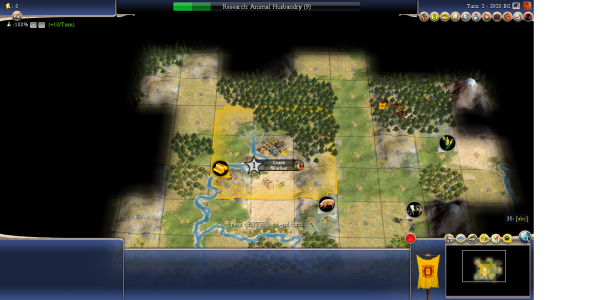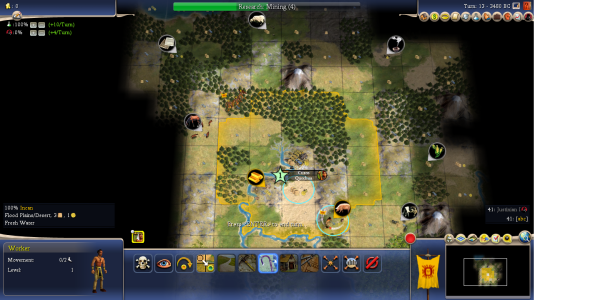Your start here is pretty decent. Some flood plains (FP) and river tiles, plus hill pigs for food.
The first thing at Turn 0 is analyzing your start and then making a decision on where to move the warrior or scout to help with the settling decision. Often settling in place (SIP) is more than fine, but often one can improve their situation a bit by moving the settler. But one moves the settler with the idea that some benefit will be gained by doing so, especially if that move is at the expense of a turn or two.
So let me state off the bat here that the first consideration for any settling decision is always food. This is an important concept in Civ IV. FOOD is KING. FOOD is Production. So when you view the information you have at turn 0 your focal point is always the best tile which is always the best food tile. In this case, that is the pigs. Everything centers on that pigs. So whether you SIP or move the settler, you will keep the pigs in your BFC.
The warrior or scout move serves mainly two purpose. A) revealing more tiles to see more possible resources hidden in fog B) reveal tiles one might lose with a settler move. So always move that guy first before making any decision on where to settle.
In this case, your warrior or Quecha really, is not in a great place for revealing information. I don't have much input there other than maybe moving 1NE to reveal more info in that direction. Or possibly move 1SW to reveal more tiles that way since the initial thought is to move 1N here.
The reason 1N is recommend is primarily because settling on a plains hill (PH) provides a bonus

to the center tile. This will speed up building that first worker even though you lose a turn. That bonus

will always be there and it is really helpful in speeding up the early game a bit. Also, that tile is on a river still so you keep the health bonus from that which is always nice.
Another option worth consider is settling 1E on that PH. This will bring the cows into play for more food and hammers - not great food mind you, but a strong tile for producing settlers and workers. You lose the health bonus, but not that big a deal. I'm almost inclined to recommend this move more, especially with that Gold tile as a bit more food will be helpful to work the Gold eventually. Gold provides a lot of early commerce which is pretty huge early on, but it is a food negative tile.
So 1N or 1E here with worker first and AH tech which is obvious. Always tech for food first if you don't already have the food tech.
A few key generally helpful tips to get you started:
1) FOOD is KING as mentioned
2) Generally always worker first..very rare exceptions to this guideline
3) Worker is the most important unit in the game. Do not undervalue them and do not undervalue worker turns. Good worker management is one of the key concepts to success in this game
4) Granary is the most important building in the game. Really the only one. Everything else is situational.
I saw a bit of discourse above on city overlap. City overlap is actually a good thing. I won't go into detail on this right now, but there is good reason for overlapping cities and tile sharing.
you are learning





 to the center tile. This will speed up building that first worker even though you lose a turn. That bonus
to the center tile. This will speed up building that first worker even though you lose a turn. That bonus 
